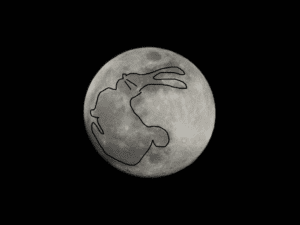High in the Himalayas, where the air is thin and the nights are endless, the people of Ladakh have long looked to the heavens for more than just beauty. The stars, the moon and the vast Milky Way have guided their lives, shaping their farming, faith and folklore for generations.
In this cold desert where silence speaks and the stars burn bright, the sky is not just above you, it is alive with stories. Each constellation has a tale, each bright dot a message. These are the ancient astro stories of Ladakh, passed down through generations in the highlands of Changthang, a region where the Earth and sky seem to meet.
Laksor: Scorpion in the sky


Among the most fascinating constellations in Ladakhi belief is Laksor, the Scorpion. Locals say it looks like a human palm stretched open, with five glowing fingers made of stars.
At the center shines a yellow star Antares, or Ldugu, known as the Bracelet Star, said to be a jewel on this cosmic hand. When the moon passes near Ldugu, the people take it as a sign: a good time for farming and harvests.
But the moon’s path through Laksor tells more than just the time of year. If it passes near the ring and little finger, dairy farmers celebrate believing their cows will give rich milk and butter. Yet if it crosses between the index and middle finger, it’s a bad omen, as those are the fingers used to hold a knife. It is said that year may bring hardship or loss.
Tale of the Twin Stars and the Pole Star


To the nomads of Ladakh, the sky is a compass. The Pole Star (Dhruv Tara) has long guided travelers and herders as they moved across the cold desert in search of pastures.
But among these guiding stars lies a story of betrayal and consequence. Near the constellation Ursa Major, two stars Mizar and Alkor twinkle side by side. Legend says they were once twin brothers. One killed the other and the gods punished him by binding them together forever. They now circle the Pole Star endlessly, a reminder that no sin escapes the eye of the cosmos.
Fear of the comet: Karma Tua Jumring


When a comet appears in Ladakh’s sky, silence falls in the villages. Known locally as Karma Tua Jumring, it is seen as a harbinger of bad luck.
People believe that the long glowing tail of the comet carries misfortune foretelling natural disasters, illness or poor harvests. In ancient times, villagers would offer prayers and light lamps to pacify the heavens, hoping to turn away its curse. To them, the comet was not a celestial visitor, it was a warning from the universe.
Chaana: The Farmer’s Constellation


In the farming season, around April to August, a constellation known as Corvus, locally known as Chaana, rises brightly from the east. Its appearance marks the beginning of the agricultural season in Ladakh.
For the farmers of Changthang, this is not just a star pattern, it is a celestial calendar. When Chaana lights up the summer sky, it’s time to sow the seeds. And when it begins to fade, it signals the approach of autumn, the season of harvest and gratitude.
Rabbit on the Moon: A tale of compassion


Among the gentlest of Ladakh’s cosmic tales is the story of the rabbit in the moon.
Long ago, a monk meditated deep in the mountains. One harsh winter, starving and weak, he was approached by a rabbit. Seeing the monk’s suffering, the rabbit leapt into the fire so the monk could eat and survive.
Moved by its sacrifice, the gods placed the rabbit’s spirit on the moon. Even today, Ladakhis say you can see its faint outline when the moon is full, a reminder of compassion, selflessness and eternal kindness.
When the Moon disappears: Dance of the Eclipse


Eclipses are rare and mystical events in Ladakh. During a lunar eclipse, locals believe that a demon is trying to swallow the moon.
In ancient times, villagers would gather, beating drums and singing loudly not in fear but in performance. They believed the rhythmic sounds would entertain the demon, convincing it to release the celestial body. It turned into a ritual celebration, blending fear with faith and joy with superstition.
Milky Way: Pathway of a King’s Horse
Stretching across the sky like a silver river, the Milky Way holds a special place in Ladakhi folklore. Locals believe it is the pathway for the horse of King Gyalam Khesar, a legendary ruler of ancient Ladakh.
They say the shining band across the heavens is his horse galloping through the stars, forever guarding the mountains and the people who call them home.
Listening to the Stars


For the people of Ladakh, the sky is not just a spectacle, it is a guide, a storyteller and a living archive of ancient wisdom.
Each night, under the dark Changthang sky, elders still share these tales with children, stories that connect the rhythm of the stars with the rhythm of life.
To listen to these stories under Ladakh’s vast sky is to hear the mountains whisper their myths to the stars, keeping alive a cosmic tradition where science, survival and spirituality become one.
High up at 14,000 ft in Maan village, where the night sky feels almost within reach, you can live these ancient astro stories yourself. Stay at Astrostays, a serene homestay by Mountain Homestays and spend your nights stargazing under one of the clearest skies on Earth. Listen to local storytellers share the timeless tales of stars, constellations and cosmic myths that have guided Ladakh’s people for centuries. Come, experience the magic of the cosmos where science meets folklore, only at AstroStays, Maan.

